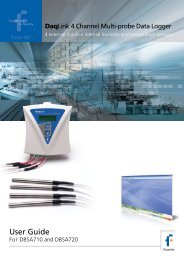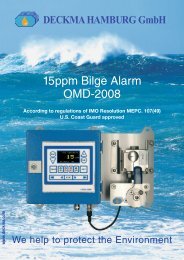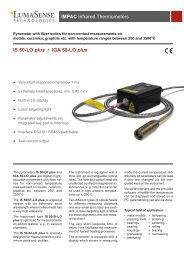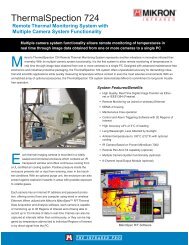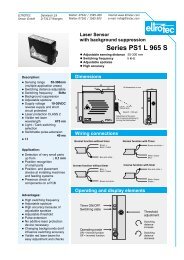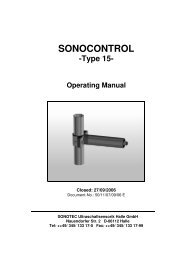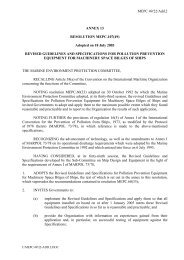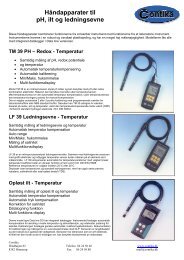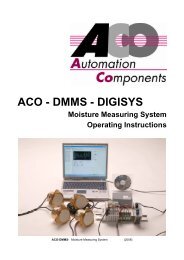Pyrometer- Handbook - Contika
Pyrometer- Handbook - Contika
Pyrometer- Handbook - Contika
Create successful ePaper yourself
Turn your PDF publications into a flip-book with our unique Google optimized e-Paper software.
9. Digital <strong>Pyrometer</strong>s: State-of-the-Art-<br />
Technology<br />
With advancing miniaturisation and integration, today's<br />
pyrometers are digital. This means that a microprocessor is<br />
built into the pyrometer. It does all the calculations and<br />
controls the memory functions. Illustration 18 shows the<br />
basic construction.<br />
The detector signal is either directly digitised or digitised<br />
after an analogue pre-amplifier (A/D converter). The<br />
digital signal is then processed further by the<br />
microprocessor.<br />
Normally, the output signals are either standard analogue<br />
or digital. Digital interfaces are usually RS 232 and<br />
RS 485. Analogue output signals are 4 ... 20 mA,<br />
0 ... 20 mA, 0 ... 10 V, etc.<br />
Advantages of digital signal conversion are:<br />
The linearisation of the detector characteristic is applied at<br />
many points. The results are much better than with<br />
electronic linearisation. Today we are able to achieve<br />
accuracies to within ± 0.3 % of the measured value.<br />
• Confined spaces: The optical head is small and can fit<br />
through narrow openings until it is nearer the object.<br />
<strong>Pyrometer</strong> <strong>Handbook</strong><br />
Illustration 18:<br />
Construction of a<br />
Digital <strong>Pyrometer</strong><br />
detector signal<br />
output signal<br />
advantages<br />
high accuracy<br />
37



